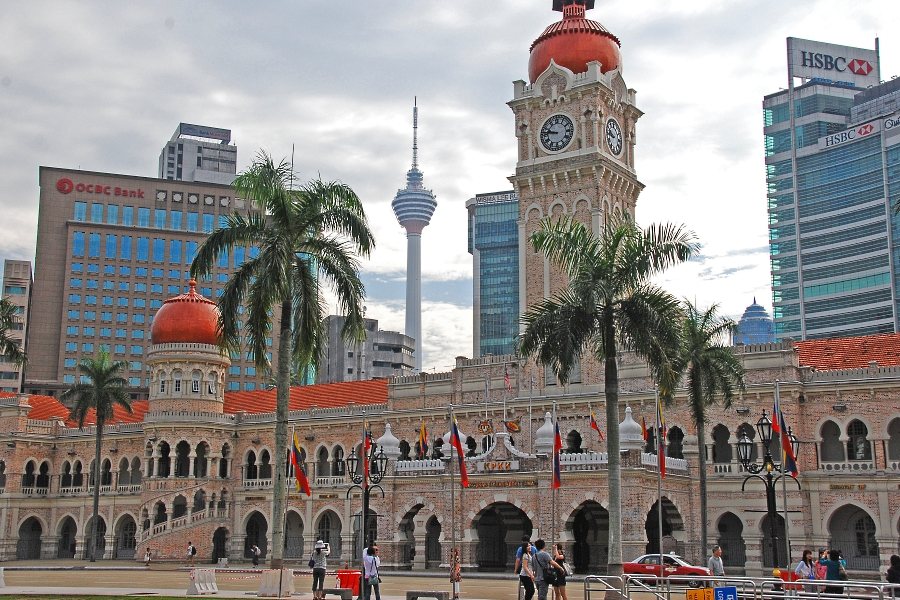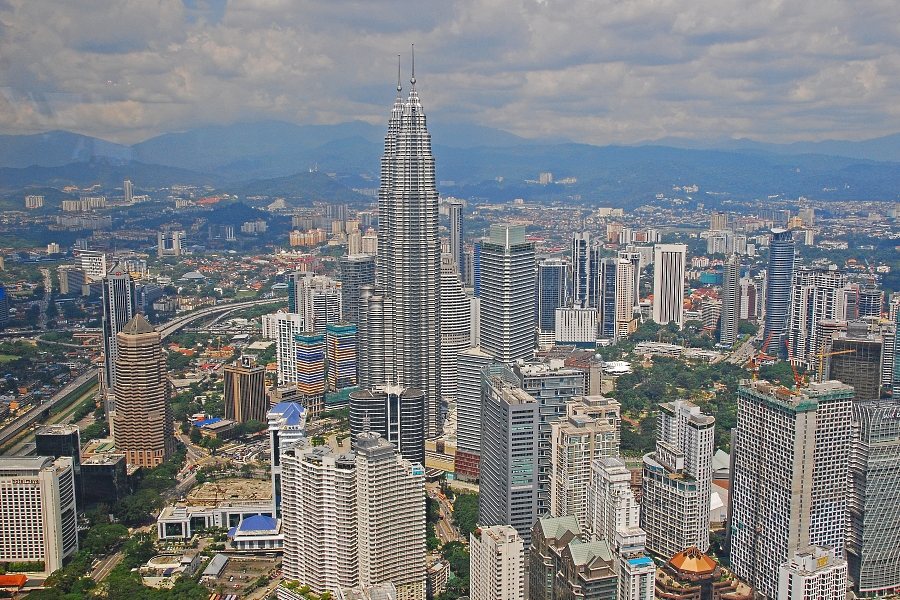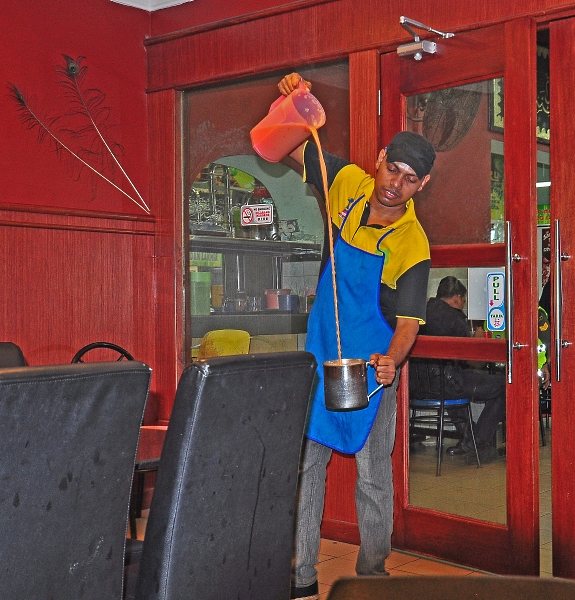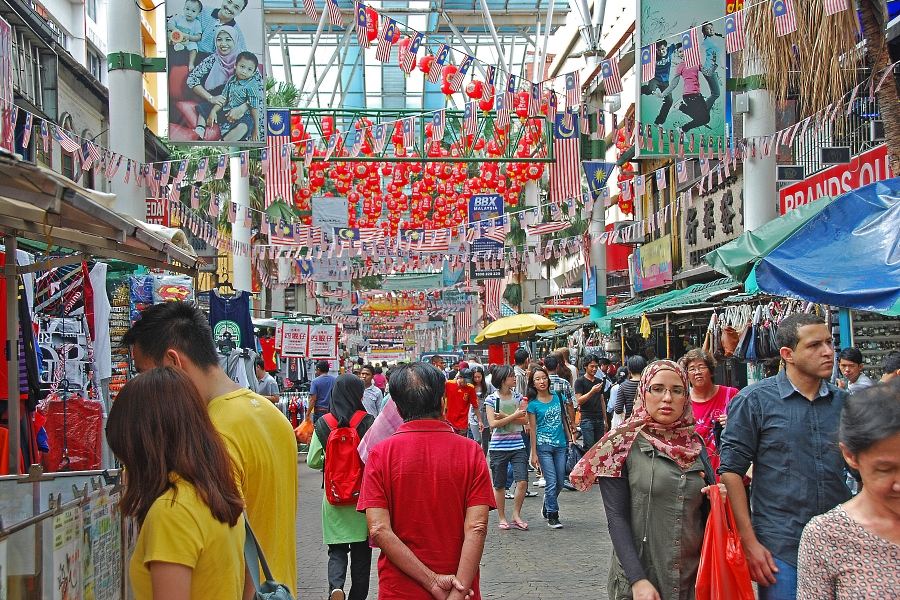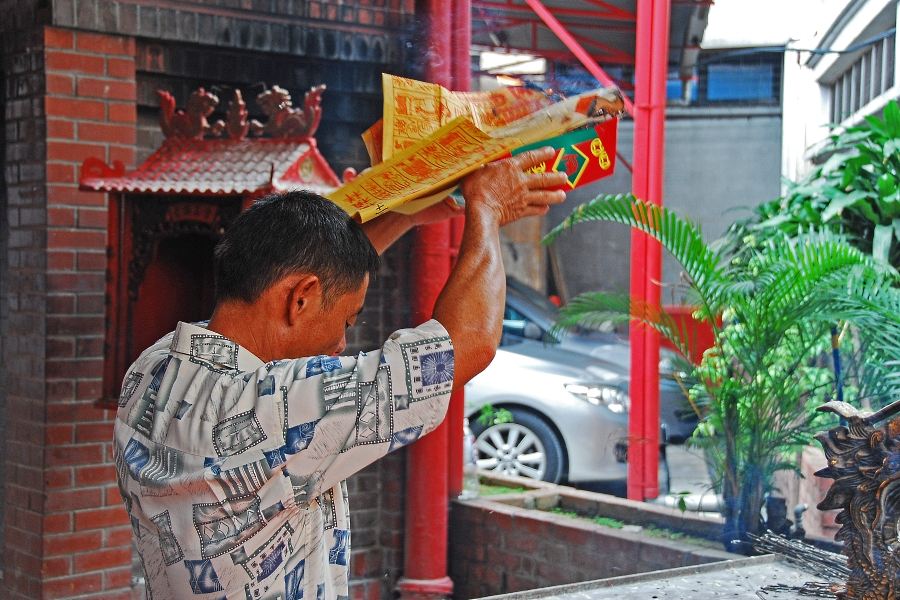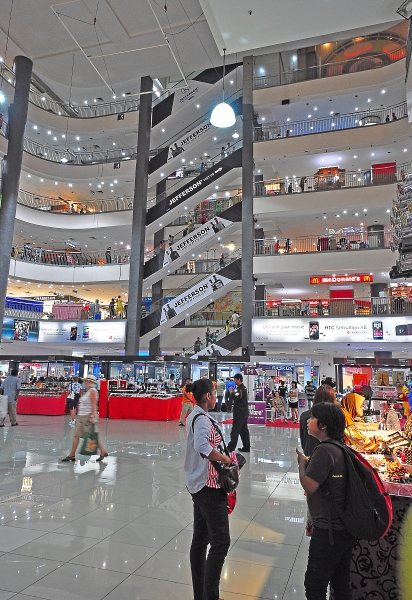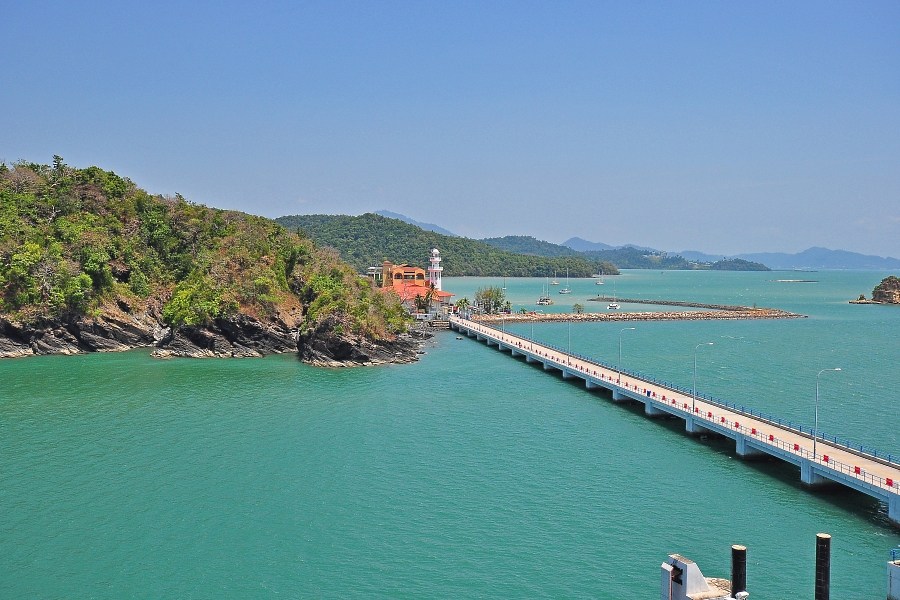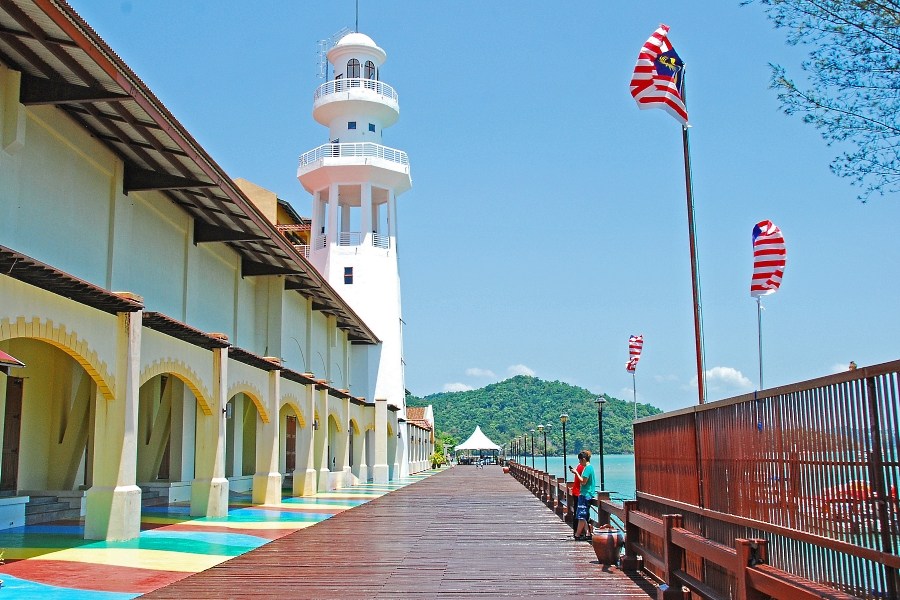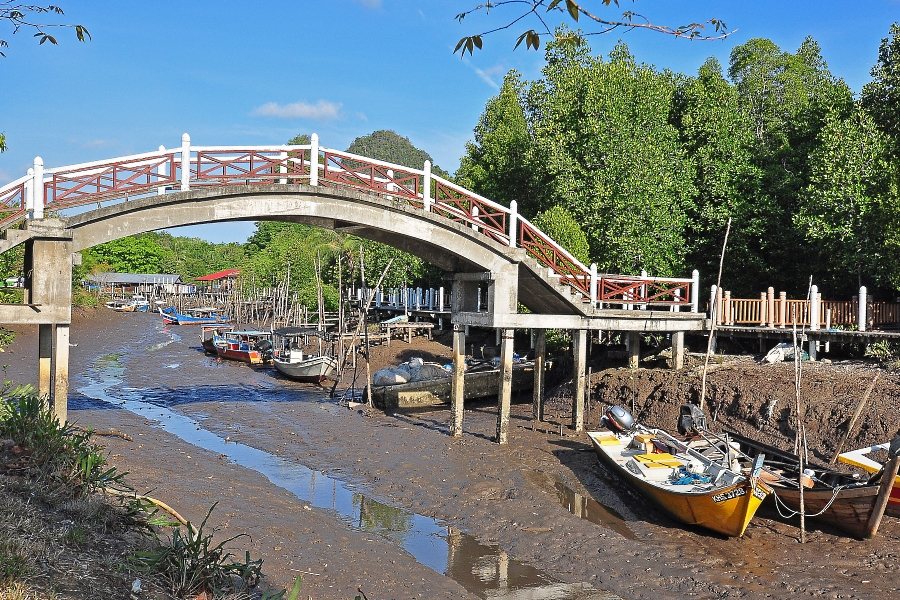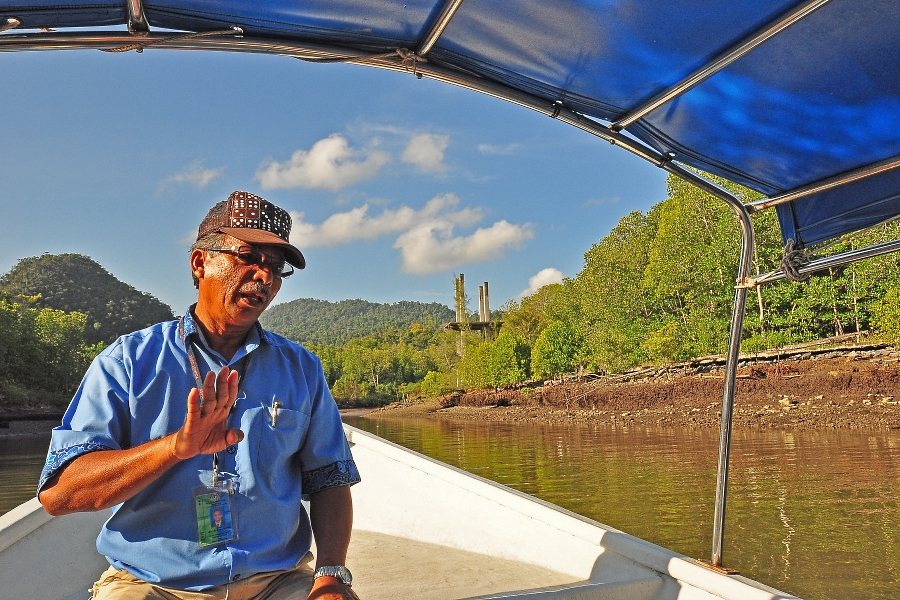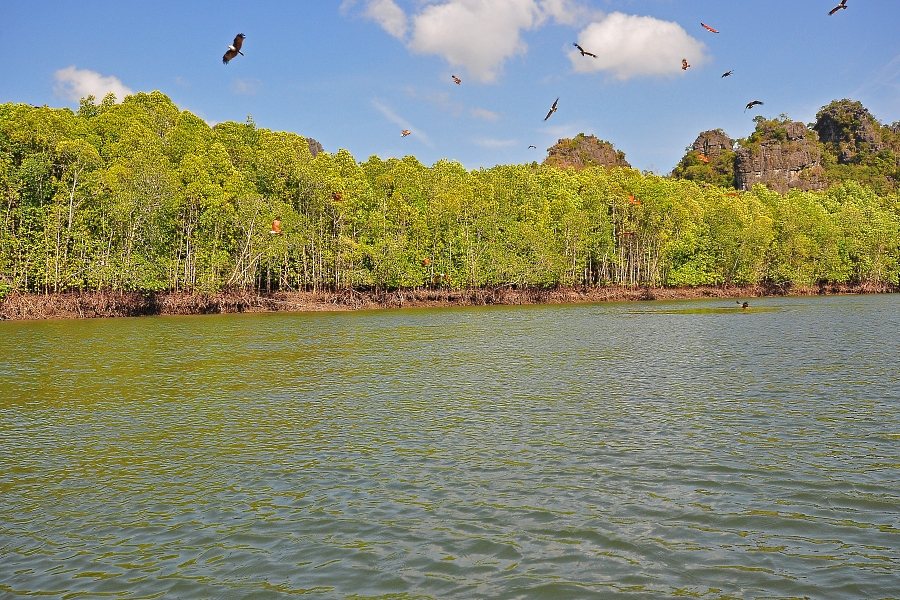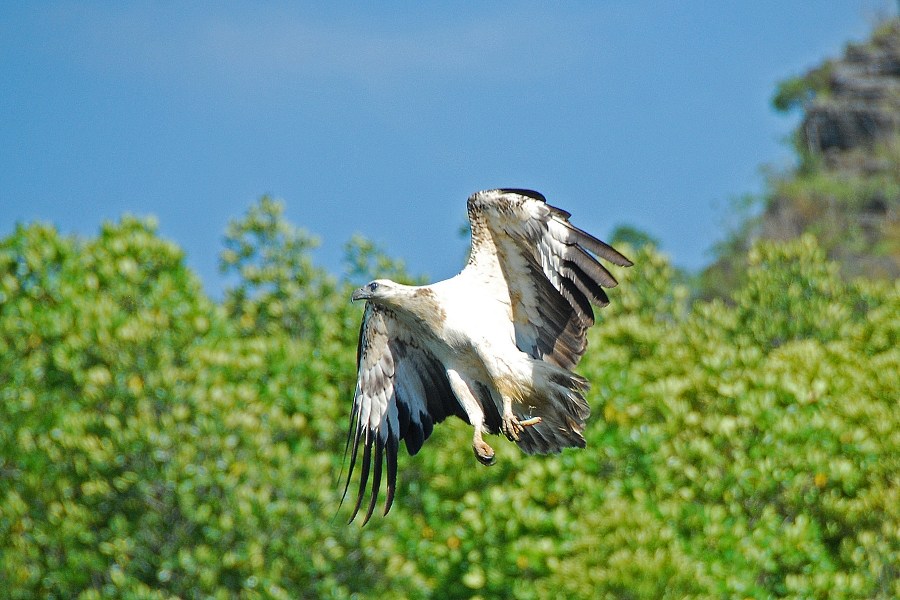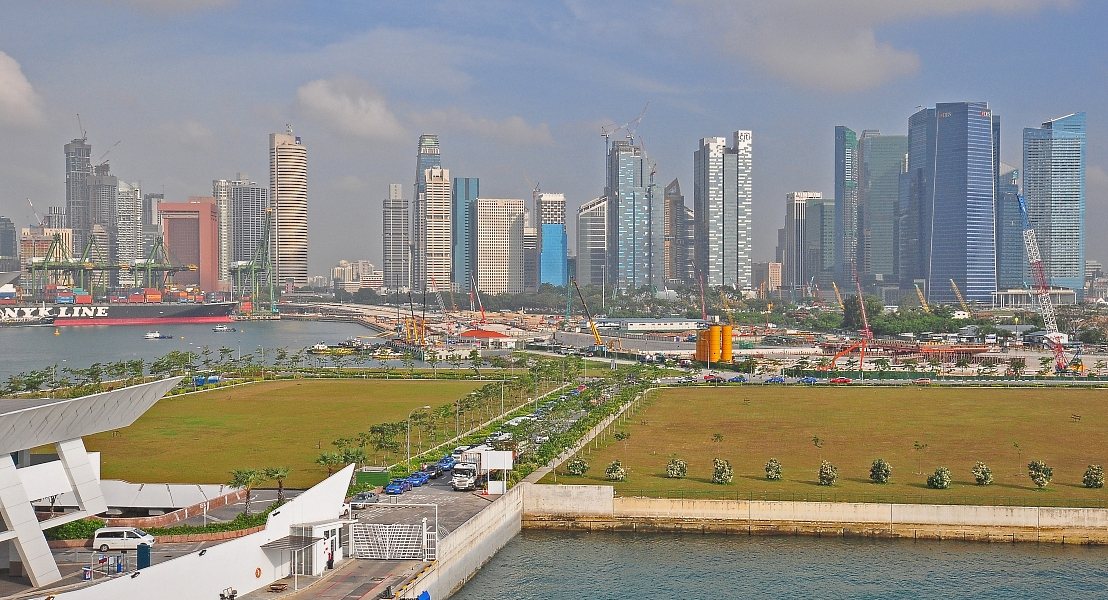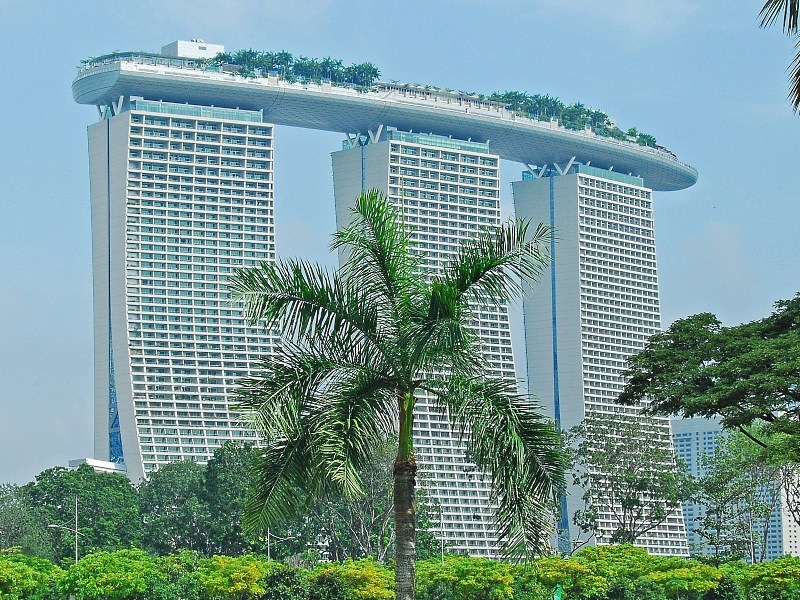Crystal Cruise to Southeast Asia, Part 3: Malaysia and Singapore
 On our voyage from Indonesia to Malaysia, the Crystal Symphony approached the equator and passengers gathered on the open deck for a solemn maritime tradition.
On our voyage from Indonesia to Malaysia, the Crystal Symphony approached the equator and passengers gathered on the open deck for a solemn maritime tradition.
As we straddled that imaginary line between northern and southern hemispheres, King Neptune rose from the depths of the Indian Ocean to initiate the miserable and unhappy Pollywogs aboard the ship who had never before known the joy of crossing the equator.
The Seasoned Shellbacks on hand -- who had previously crossed the equator and were therefore wise to the mysteries of the universe -- watched in sympathy as token "wogs" from the ship's crew were slimed and tossed in the pool.
**********************************
After two relaxing and luxurious days at sea, which included the amusing equator-crossing ritual, we began our visit to the country of Malaysia in its capital city, Kuala Lumpur. Malaysia is more prosperous and less populous than Indonesia, and nowhere is the difference more striking than in the capitals.
 Kuala Lumpur is modern and bustling but clean and orderly, with an impressive skyline that includes the Petronas Towers, once the world's tallest office buildings and still the tallest twin towers. The lower floors of both towers combine to form one of Malaysia's premier shopping malls.
Kuala Lumpur is modern and bustling but clean and orderly, with an impressive skyline that includes the Petronas Towers, once the world's tallest office buildings and still the tallest twin towers. The lower floors of both towers combine to form one of Malaysia's premier shopping malls.
Also notable is the KL Tower, used primarily for communication but containing an observation deck 1,100 feet above the ground, the highest viewpoint in the city that is open to the public. We visited all three structures and strolled through Chinatown and the Central Market.
We stopped at an Indian diner to witness traditional tea pulling (see photo in slideshow), where strong, hot tea mixed with condensed milk is poured between pitchers until the right amount of froth and the ideal temperature are achieved. We drank our pulled tea with dosa, a fermented crepe that we dipped in fish curry.
The population here is primarily Malay, Chinese and Indian with the corresponding mix of Muslim, Buddhist and Hindu cultures. We visited a small Chinese temple on the edge of Chinatown filled with smoke from incense, candles and burning paper prayers (the smoke carries the prayers to the heavens).
 In the central city, we explored the wildly loud and colorful Hindu temple, Sri Mahamariamman, where gongs, bells and drums rang out.
In the central city, we explored the wildly loud and colorful Hindu temple, Sri Mahamariamman, where gongs, bells and drums rang out.
We finished our shore excursion with an opulent buffet lunch at a luxury hotel, where we sampled many local delicacies, including jellyfish salad and raw squid.
The next morning, we arrived in Penang with plans to take a boat to a monkey-filled national park for swimming and a barbecue. However, my stomach was a bit on edge (I am not pointing fingers at the raw squid), so we rode the ship's free shuttle into town and explored on our own. Having seen very little of Penang, I don't have a strong impression of the place but it was friendly enough.
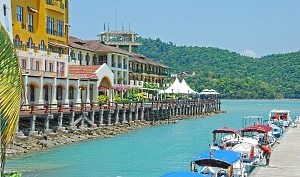 Then we were on to Langkawi, an island just off the coast from the Malaysia-Thailand border, which has become a regional tourist destination. Lush and green, Langkawi is sparsely populated and home to a growing number of upscale resorts. The sun was out as we drove into the countryside, parked on the banks of a saltwater river and traded our motor coach for small powerboats that held six guests.
Then we were on to Langkawi, an island just off the coast from the Malaysia-Thailand border, which has become a regional tourist destination. Lush and green, Langkawi is sparsely populated and home to a growing number of upscale resorts. The sun was out as we drove into the countryside, parked on the banks of a saltwater river and traded our motor coach for small powerboats that held six guests.
After a short ride upstream, we climbed out of the boats and into a pitch-black cave, where the guide's flashlight revealed a ceiling covered with twitching bats just above our heads. Then we returned to our boats and raced through a maze of rugged islands jutting almost straight up from the sea. We stopped to watch eagles swooping low to snatch bits of food being tossed on the water by another boat's captain before continuing on to the Strait of Malacca.
Langkawi is the largest island of about 100 that make up the Langkawi Archipelago. It's a beautiful place, and we enjoyed being in nature after several days of urban experiences.
Then we were off to our final destination, the crown jewel of the cruise, Singapore.
 Singapore is a tiny (12 by 22 miles in size), safe and immaculate country with a soaring skyline. The country is one of the world's largest banking centers and home to headquarters and regional headquarters of numerous multinational corporations.
Singapore is a tiny (12 by 22 miles in size), safe and immaculate country with a soaring skyline. The country is one of the world's largest banking centers and home to headquarters and regional headquarters of numerous multinational corporations.
Separated from Malaysia by a narrow channel, Singapore was purchased by the British soon after Thomas Stamford Raffles arrived in 1819, when there were only about 1,000 inhabitants. Singapore suffered a brutal occupation by the Japanese in World War II, became part of Malaysia for two years starting in 1963 and became fully independent in 1965.
Since that time, the country has gone through an amazing transformation. Today, more than five million people call Singapore home, and the country is so desperate for space that it is buying sand from neighboring countries and expanding into the ocean. It is estimated that Singapore's land reclamation projects have increased the country's total land area by 21%.
The country's low personal income tax rates and booming economy are not only creating wealth but attracting a wave of millionaires and billionaires from around the world. An astounding 1 out of 6 families in Singapore has a net worth exceeding one million dollars -- not counting the value of real estate, businesses and luxury goods.
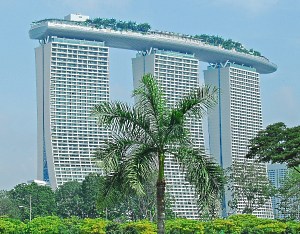
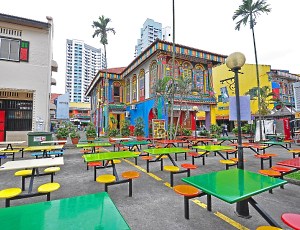 We spent one night docked in Singapore on the Crystal Symphony and three more nights at the Four Seasons to make sure we had ample time to see everything.
We spent one night docked in Singapore on the Crystal Symphony and three more nights at the Four Seasons to make sure we had ample time to see everything.
We visited the futuristic Marina Bay Sands -- three 55-story hotel towers connected by a rooftop terrace with a 492-foot-long infinity pool -- to watch the sun set over the city. We tried Singapore Slings where they were invented, at the famous Long Bar at the Raffles hotel, and spent a morning exploring the Singapore Botanic Gardens. We enjoyed a lavish Sunday brunch at the Fullerton Hotel, followed by a stroll along the Singapore River. At night the restaurants and bars there come alive, and the skyscrapers are illuminated with lights that change color and design.
We explored Chinatown and Little India on foot and visited the aquarium on Sentosa Island. The aquarium was the only disappointment we experienced, with such cramped tanks my wife and I would have gladly helped every creature escape into the ocean if we could have.
The Singapore airport -- the world's highest-rated airport in many frequent-traveler polls -- is an attraction unto itself, with beautiful artwork, extensive shopping and restaurants, swimming pool, nature trail, butterfly garden and movie theaters. The airport has become a big draw for local residents.
Of all the places I have seen in my life, Singapore is outdazzled only by Dubai, which is financed by vast oil production, while Singapore has no natural resources of any consequence.
Some say that Singapore's biggest single advantage is its educational system. Children are enrolled in school at an early age and taught to smile, study hard and respect their teachers. There is constant pressure to work hard in order not to be left behind.
Students take standardized tests on a regular basis, and the best and brightest are channeled into gifted and talented programs. A high percentage of families pay for private tutoring for their children after the public school day ends. Admission into the best universities and ultimately the best jobs go to those with the best performance, without regard to the family one is born into, race, religion or nationality.
The country is a meritocracy with a can-do spirit.
Singapore's government has been criticized for making drug traffickers eligible for the death penalty, for caning graffiti "artists" and vandals and for banning non-medicinal chewing gum. The punishment for smuggling gum into the country is a year in jail and a $5,500 fine.
As a deterrent, there's no question the laws are effective. The country has one of the lowest rates of drug abuse in the world and no one is pushing drugs on the street. We did not see any graffiti, gum or litter of any sort. But do these activities merit the punishment?
I'm sure I have readers on both sides of this argument. Most Singaporeans are in favor of the penalties and believe that their government is doing a good job.
There are many things to admire about Singapore, some to ponder and perhaps a few that would be better changed, as in any country.
Singapore is an eyeful. Visit if you get a chance.
Sincerely,
Alan Fox
Executive Chairman
Vacations To Go
Related newsletters:
Crystal Cruise to Southeast Asia, Part 1: On Board Crystal Symphony
Crystal Cruise to Southeast Asia, Part 2: Exploring Indonesia




